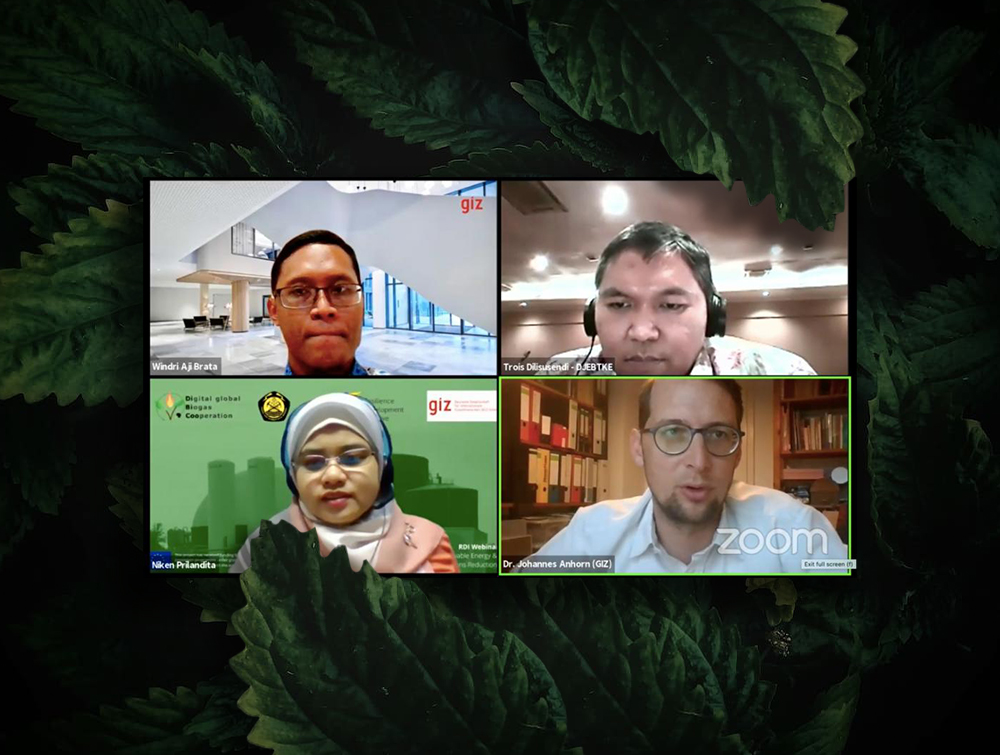JAKARTA – The government continues to pursue the gap in biogas utilization that is far between the target of achieving the performance of the Ministry of Energy and Mineral Resources Strategic Plan (Renstra) and the target of the National Energy General Plan (RUEN). One of the biogas development strategies currently being implemented is the development of bio-CNG on a commercial scale as a transportation fuel to substitute for LPG for industry and power plants. This was stated by the Head of the Sub-Directorate for Bioenergy Program Preparation, Trois Dilisusendi in a webinar entitled “Biomethane Development in Indonesia and the European Union: Opportunities, Challenges, and Its Application as Bio-CNG” on Tuesday (3/11).
“The achievement of biogas in 2019 is 26.28 million m3 from the target RUEN 95.6 million m3, while the target RUEN in 2025 is 289.8 million m3. Of course, this is a challenge for the Government in how biogas can achieve the target. This is what we are working on together. So, if we look at the larger household scale biogas program or communal biogas and industrial scale biogas, Bio CNG is one of the answers to how the Government, at least to catch up with the RUEN gap, “said Trois.
Bio – Compressed Natural Gas (Bio-CNG) / Compressed Biogas is the result of purification of Biogas (Pute Methane), where impurity gas compounds are removed to produce greater than 95% Pure Methane Gas. Compressed Biogas has a heating value and other properties similar to Compressed Natural gas so that it can be used as a fuel for automotive, power generation, as well as for industrial and commercial purposes. Bio-CNG can be applied as a substitute for LPG, feeding to city gas networks, and transportation.
“In the future, we want to encourage biogas to be upgraded, we use it to become bio-CNG. Apart from the first goal in order to increase the resilience and independence of national energy, the second sees the enormous potential for biogas in Indonesia, both from livestock manure, agricultural / plantation waste which is abundant and widespread, “said Trois. Toris further elaborated on the development objectives. bio-CNG in Indonesia, including:
– Supporting national energy security in the form of achieving the target of the EBT mix through the contribution of biogas utilization,
– Reducing the consumption of imported LPG to 4 million tons by 2025,
– Improve environmental quality by reducing GHG emissions, where the contribution of methane gas emissions is 21 times CO2 gas,
– Accelerating the provision of energy access for isolated, underdeveloped areas, borders and islands, and
– Save foreign exchange and support domestic economic growth.
Regarding the development of bio-CNG, the Government together with the Global Green Growth Institute (GGGI) have conducted a market study of bio-CNG development in Central and East Kalimantan in order to obtain the potential supply and demand for Bio CNG development in these two locations and to explore viable business models. commercially. The method used in the study is an analysis of technological, supply, demand and economic aspects. The results of the study were presented in the Forum Group Discussion: Market Study of BioCNG Application in East Kalimantan and Central Kalimantan Provinces in mid-August 2020.
“So we have seen from the technology analysis point of view that the technology we can use is recommended using membranes and then supply analysis, from the demand side we also see bio-CNG as a substitute for the LPG industry and also talk about the economy, we also see that from this study. The economy is quite good, “Trois concluded. (RWS / DLP).
Find the original article here.
